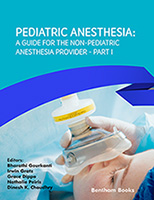Many thousands of high quality anatomy textbooks have been written over the centuries, and this textbook does not attempt to replace any of these or to improve on any of them. As a matter of fact, many of those texts were used as source material for this book. Those books remain essential parts of our fundamental study of Medicine. They contain beautiful photographs and drawings of carefully prepared dissections of anatomical specimens. However, to make the anatomy pictures beautiful and understandable the fascia and tissue barriers that surround tissue and organs (nerves in this case) had to be removed to illustrate the structures clearly; these textbooks were written to explain the gross macroanatomy to surgeons and other physicians.
But anatomy for regional anesthesia and acute pain medicine is different. Local anesthetic agents do not readily cross over anatomical barriers, and if they did they would be highly toxic. They therefore have to be deposited in the correct spaces surrounding nerves to allow diffusion to nerve axons without harming them. To describe these spaces, the authors of this textbook make liberal use of modern microscopic and electron microscopic studies of nerves as well as new ultrasound technology to explain, not only where the nerves are, but also what structures, membranes and barriers surround them and what the functions of the nerves are. Local anesthetic agents can only be effective if they reach the axons of nerves and they can only reach the axons if they were injected into the correct tissue compartment close enough so that it can readily diffuse to the axons, while the nerve axons are still protected from its potential toxic effects.
This textbook is also not a regional anesthesia or acute pain medicine textbook. It does not attempt to instruct on the techniques or style of performing nerve blocks and the authors tried to refrain from expressing opinions, but rather reflect on the anatomical facts, as we now know them. Its quest is to teach where the nerves are (macroanatomy), what tissue membranes and barriers surround them (microanatomy), what their functions are (functional anatomy), and how to find them (sonoanatomy). If these are known and understood, any nerve block, known or unknown to us, should be easy to accomplish effectively and safely.
Some of our new understanding of the microanatomy has become apparent in only the past few years, especially the circumneural (paraneural) sheath/space, and most of the “newer” knowledge basically served to validate and emphasize our previous knowledge from the days of Keys and Retzius some 150 years ago. For the old and new understanding the authors would like to pay tribute to the contributions and influences that the groundbreaking work of Gale Thompson, Dag Selander, Daniel Moore, Henning Anderson, Manoj Karmakar, and Miguel Reina and their colleagues, among many others, had on the creation of this textbook. We finally realized that what we for many years have simply called the “sweet spot of the nerve,” the place where regional anesthesiologists of yesteryear coined the phrase “no paresthesia, no block” for, is nothing else but the subcircumneural (subparaneural) space. It also explains why some secondary blocks work well while others fail.
With the recent introduction of ultrasound technology to our practice, we realized its tremendous value. Unfortunately, ultrasound works best when we need it least, for example, when looking at superficial nerves, and visa versa. Furthermore, until high-definition ultrasound is universally and readily available, the membranes and connective tissue barriers surrounding nerves will continue not to be clearly “visible” by regular ultrasound. Ultrasound scanning is dynamic, and the way to fully appreciate the image looked at is to follow a structure, a nerve for example, to see where it comes from and where it is going to, or to see pulsations of arteries, compression of veins, or shimmering of lung tissue, etc. For this reason, the authors present the sonoanatomy not only as still images, but also as video productions to express a particular structure’s dynamic view.
Finally, the book deals with the functional anatomy of every nerve that lends itself to high yield regional block. For that we describe the motor response these nerves have to electrical stimulation, and also through video productions demonstrating the motor responses by percutaneous nerve stimulation using a human model with the surface anatomy painted on her.
The design of this textbook is such that by viewing the figures and reading their legends, together with the viewing the video productions, practitioners should gain a high level of a working knowledge of the anatomical foundations required to practice safe and effective regional anesthesia and acute pain medicine. Should the student wish to learn more, there is ample supportive text and references to study the fundamental concepts further.
André P. Boezaart
Departments of Anesthesiology and Orthopaedic Surgery and Rehabilitation
Division of Acute and Perioperative Pain Medicine University of Florida College of Medicine
Gainesville, Florida
USA





